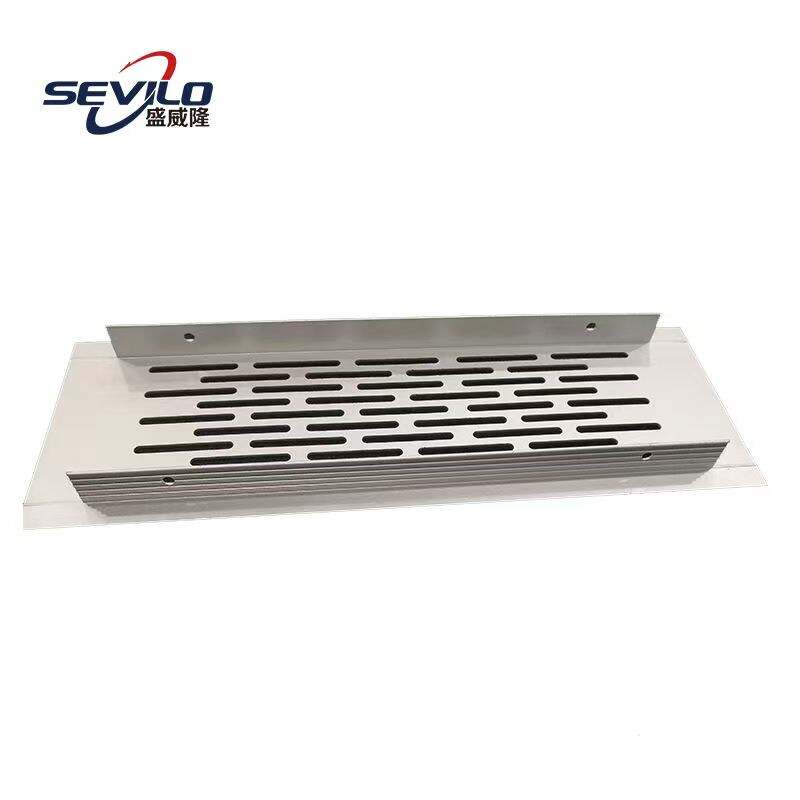Comparing Ventilation Grilles: Materials vs. Performance
When it comes to picking ventilation grilles for an area, it’s all about the balance between the characteristics of the materials and the performance requirements like airflow efficiency, durability, and the environmental conditions. Each material (aluminum alloys, plastic, wood, steel) fulfills different performance requirements. Thus, material selection needs to match performance requirements of the specific area. Sevilohardware (https://www.sevilohardware.com/) is one of the top ventilation alternatives sellers and has ventilation grilles of different materials that cater for different use cases. Here’s another comprehensive analysis of the different performance of materials typically used for ventilation grilles.
Ventilation Grilles of Aluminum Alloys: The Perfect Mid-way of Efficiency and Durability
Ventilation grilles of alloyed aluminum materials is another all-around option. These alloyed aluminum ventilation grilles are also resistant to corrosion and can be used in and out of the premises in spaces such as kitchens and bathrooms and even on patios. The rigidity of aluminum allows you to control the spacing of the slats (8-12mm) allowing for the perfect control of airflow- maximized air passage while blocking debris. Sevilohardware also offers alloyed aluminum ventilation grilles of such lightweight construction that the installer can work alone and is used in ventilation for long periods of 10-15 years without any warping, allowing for consistent airflow control.

In most residential or commercial settings, aluminum alloy ventilation grilles are effective and easy to maintain, even if, as compared to steel, they offer lower impact resistance.
Steel Ventilation Grilles: Maximum Strength for High-Traffic Areas
Steel ventilation grilles are suitable for high-traffic or industrial spaces because they excel in strength and impact resistance. They are also made from galvanized or stainless steel, so they withstand heavy bumps from warehouse and busy office hallways. They also resist rust, with stainless steel models even suitable for coastal areas. Steel’s rigidity allows for narrow slat spacing (as close as 6 mm), which is advantageous for spaces needing fine debris filtration, like dusty workshops. However, galvanized steel grilles may require repainting and will rust if not maintained, which is a downside to their heavier weight—installation will require 2 people. Sevilohardware’s steel ventilation grilles are ideal for industrial kitchens or manufacturing facilities, where durability is a primary concern and weight or subtle aesthetics can be disregarded.
Plastic Ventilation Grilles: Budget-Friendly for Low-Demand Spaces
Plastic ventilation grilles are a budget-friendly option, best suited for low-traffic, low-moisture indoor spaces (like bedrooms or home offices). These ventilation grilles are lightweight (easy to install) and come in basic colors (white, beige) that blend with simple decor.
Their performance does have limits though: plastic will warp when it gets really hot (so don't set it near radiators or stoves) and it will crack if enough force is applied. Even the airflow will get really bad with time—slats that are warped will block the air passage and make theHVACsystem overwork. They also don't work well with humid climates, as they will absorb water and grow mold. Sevilohardware does supply plastic ventilation grilles to customers that are really tight on funds, but that shouldn't really be relied on for lengthy time periods or places that are really focused on performance (like humidity and endurance).

Wood Ventilation Grilles: Aesthetic Focus For Low Wear Areas
Wood ventilations grilles are designed for light use, and take a little more care for the look of the space. They provide a soft touch to more rustic or traditional areas (like living rooms or boutique hotels). For greater endurance, they are constructed of hardwoods (oak, maple) that provide greater connection with the wooden flooring or panel. There are also some limits to the performance of wood. It will take in moisture (which is a problem in bathrooms, as it will warp) and will need regular staining/painting so it doesn’t rot. For air passage, it will also be less effective, as the slats are thicker then of plastic or metal.
Wood ventilation grilles can be damaged by an impact (a single bump can cause a dent or scratch to the surface). Sevilohardware's wood ventilation grilles are designed for specific purposes: to complete the look of a space where cohesion and aesthetics are most important and where long-term durability or resistance to moisture is not a concern.
Choosing the Best Ventilation Grille Material
When selecting ventilation grilles, there are three important points to consider: durability (how well it withstands moisture and traffic), airflow efficiency (which is determined by the spacing and rigidity of the slats), and maintenance (which is how often it needs to be cleaned or repaired). For most residential and commercial applications, aluminum alloy ventilation grilles provide the best overall value. They are sufficiently durable, provide adequate airflow, and require minimal maintenance. Steel is suited for industrial applications, plastic is appropriate for temporary, low-cost uses, and wood is appropriate for low-traffic areas where aesthetics are important. Sevilohardware helps clients to identify the best match for ventilation grille materials based on performance to ensure a long-term solution rather than just a simple purchase.
Conclusion
Evaluating ventilation grilles materials reveals that one solution is not sufficient for every purpose. Aluminum alloy is flexible, steel is robust, plastic is economical, and wood is decorative. The specific requirements of the space determine the best option: moisture, traffic flow, budget, and design requirements. Sevilohardware provides a complete range of ventilation grilles, guiding clients to achieve the best possible alignment with the functional needs of the space.
Match materials with performance to avoid costly replacements, and for ventilation grilles to continue working for years, ensure that they remain effective.

